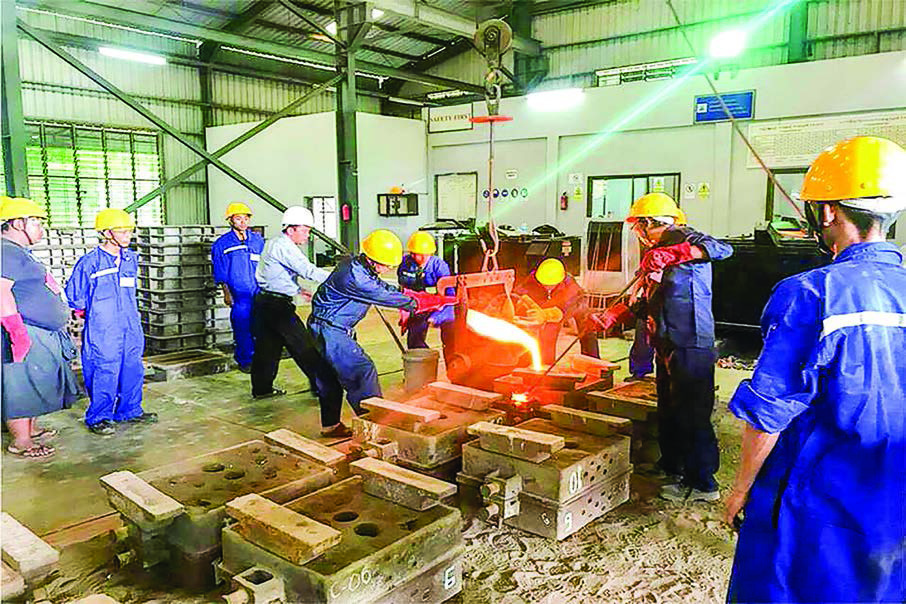28 October
THE Myanmar Education Law was enacted by the Hluttaw in 2014. However, amendments to the Law were made in 2015. The MEL as amended, is an over-arching law covering all education and training activities, whether private, public or joint venture. It has provisions for the formation by the Government with the approval of the Pyidaungsu Hluttaw, of a National Education Policy Com-mission. The MEL also has pro-visions for the formation by the National Education Policy Com-mission, of a “National Education Standard and Quality Assurance Committee” which is empowered with ensuring quality assurance of education and training.

A Quality Assurance System encompasses several functions including Institutional accreditation, setting “Learning Outcomes” or “Competency Standards” relating to the program content (at different levels) of the education and training system and ensuring quality of assessment (external and /or internal ) leading to the awarding of a “Qualification” and so on.
Myanmar Education System it seems had lacked a well functioning Quality Assurance System in the past. Of course there was Quality Assurance by the education and training institutions concerned. However, there was no National level body responsible for quality assurance. It seems that QA was left largely to the Institutions in almost all the modes of education. Now, under the new MEL, the Quality Assurance of Education whether provided by the private or public sector will be overseen by the relevant Commit-tee formed under the Myanmar Education Law as mentioned above.
“Qualifications” is taken to mean the formal recognition awarded for passing or completing a particular program of study/learning by which the attainment of the prescribed learning out-comes and competences has been achieved. Qualifications include Certificates, Diplomas of different levels and Degrees of different levels. Qualifications may also be acquired through Recognition of Prior Learning (RPL) process which assesses experiential and self-learning acquired outside the “Formal” education system.
As for the RPL process the Employment and Skills Development Law of 2013, enables the organization of the National Skills Standards Body (at present the NSSA), which sets Occupational Competency Standards for the various “Skilled Occupations”. An “ Assessment and Certification Committee” formed by the NSSA is responsible for ensuring quality assurance of the RPL process, conducted by the assessment providers accredited by the NSSA. Competency recognition Certificates at 4 levels of skilled workers are awarded to those who, after the assessment process, are declared “Competent” at the level concerned.
The amended MEL recognizes equivalence of Qualifications, particularly in relation to the Technical and Vocational Education and Training Sector. Given that undertaking of Education by the private sector is recognized in the MEL, there will arise a need for establishing equivalence of all qualifications awarded at all levels by the public and private sector education institutions. This calls for the establishment as well as a National Qualification Framework linked to the Quality Assurance System.
A “National Qualification Framework” (NQF) may roughly be compared to a “bookshelf ” with several shelves (but with no “cap-ping” shelf). The NQF “bookshelf ” comprises of levels of qualification assigned to each of the shelves starting from bottom upwards with, for example, “certificates” of levels 1 to 4 for the first 4 shelves; “Diploma” or equivalent qualification at level 5 i.e the fifth shelf ; a “Bachelor” Degree or equivalent qualification at level 6 i.e; the sixth shelf. The next higher 7th shelf would be assigned to a “Master” degree or equivalent qualification, the 8th shelf to a “Doctoral” degree or an equivalent qualification. Perhaps it’s a oversimplification of a rather complex matter but the intention was to make the average layman understand it. Qualifications earned through Recognition of Prior Learning would be as-signed to the relevant “shelf ” of the NQF “bookshelf ”.
Determining “Equivalence” of qualifications for any level, (say “diplomas” awarded by several private and public institutions), requires describing in general terms, the learning outcomes and competences to be acquired for the level of “Qualification” award-ed. These are termed “Descriptors” and it requires expertise and experience to express them in language which is generic and acceptable to all stakeholders involved in providing education. Acceptable “Descriptors” for each level will be the building blocks for the establishment of the whole NQF.
NQFs are useful not only for comparison of Qualifications within the country, but also for comparison of Qualifications among countries in the region for inter-regional portability of the “Qualification”. The ASEAN has developed an ASEAN Qualification Reference Framework which the Member States can refer to in drawing up their National Qualification Frameworks.
Once the NQF is established, then all qualifications awarded, whether by private or public institutions as well as qualifications obtained through Recognition of Prior Learning can be assigned to the relevant self of the NQF “bookshelf ”. It will facilitate the comparison of Qualifications with-in and between levels vis-a-vis the labour market and hence facilitate the choice by employers of “the right person for the right place”. It will also facilitate the portability of qualifications, (perhaps in combination with Mutual Recognition Arrangements) for specific groups of occupations with the other Member States of ASEAN.
By Lokethar



